Jonathan Miller and I started working together on stage productions in 1997, and our collaboration continued until he developed Alzheimer’s a few years ago. I designed 18 productions for him, many of which have subsequently played in other theatres around the world, so we spent a lot of time together. He was such good company, as he took the work seriously but lightly, and loved to talk about other things. He gave loose but confident direction, which gave me the freedom to be inventive, and to solve problems my own way. His suggestion at the start of a project might be as vague as ‘I like the texture of this piece of rusty painted metal’ (he introduced me to Richard Serra’s grand-scale work); or he might say, as he did for a staging of Janáček’s opera Jenufa in 2006, ‘You must read My Ántonia by Willa Cather’ – or Joseph Roth’s Radetzky March for Der Rosenkavalier. He was often excited by the thread of an idea, leaving plenty of room for interpretation and expansion.
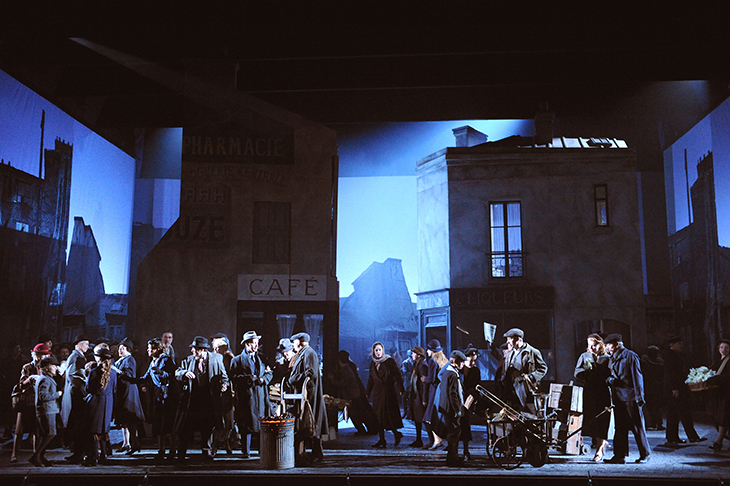
A scene from Jonathan Miller’s La Bohème for the ENO in 2009, with a set design by Isabella Bywater. Photo: Tristram Kenton
He was passionate about photography. When we came to work on a new Bohème for the ENO in 2009 he was unshakable in his desire to set it in the Paris demi-monde as photographed in the 1930s. He felt it was perfect for La Bohème, as here was a true glimpse of life. I already knew the work of some of those extraordinary photographers – Brassaï, Cartier-Bresson, Eugène Atget – but he introduced me to the wonderful André Kertész. Sometimes, as with La Bohème, he enjoyed filmic realism but he also liked abstraction, and for Rossini’s Ermione I made a metallic grey semi-abstract set, based on some daguerreotypes Jonathan showed me. We set it loosely during the American civil war, but stylised and simple. It was billed as ‘The best Rossini you have never heard of’, and the audience must have been expecting frolics à la the Barber of Seville, not a grim Greek tragedy with no jokes.
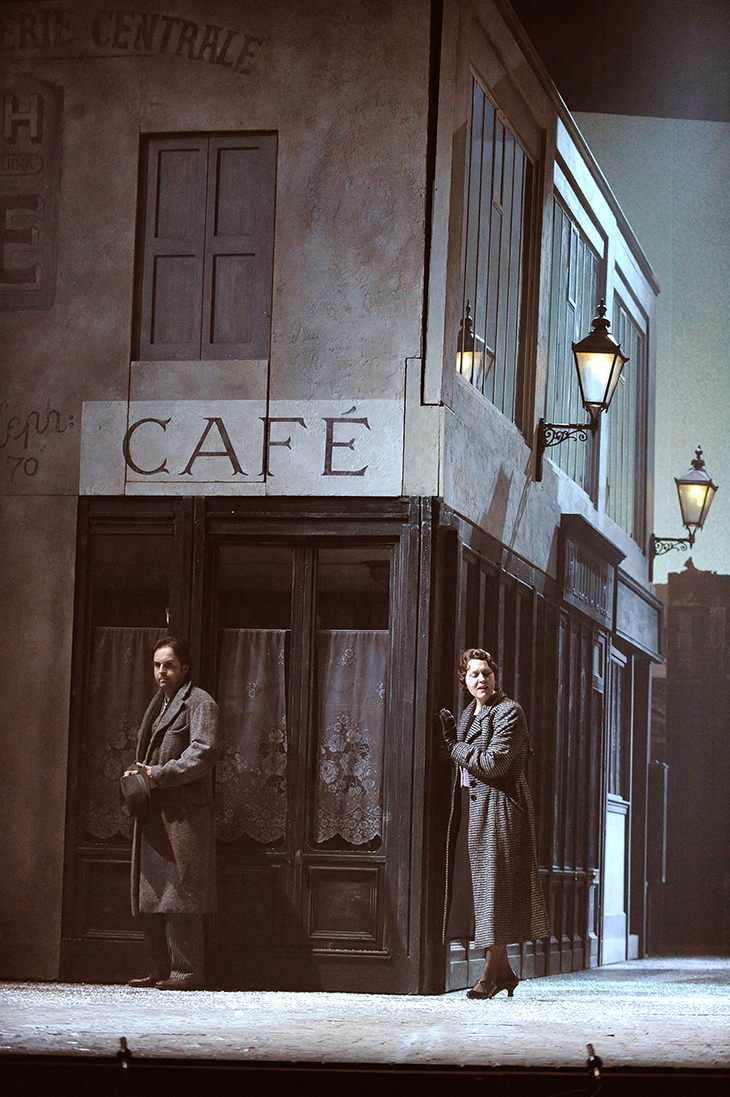
A scene from Jonathan Miller’s La Bohème for the ENO in 2009, with set design by Isabella Bywater. Photo: Tristram Kenton
Jonathan of course was good at jokes, and rehearsals were frequently full of laughter as he entertained us, even if the show we were rehearsing was not a comedy. For Donizetti’s Don Pasquale he talked about a pair of miniature rooms set back to back on a wooden turntable that he had recently seen in an antique shop, and I loved the idea of setting it in some kind of doll’s house. I knew Jonathan could make good use of many rooms, as we would then see lots of things happening at once, so I made a large, traditional-looking nine-roomed house with great doors on the front. It seemed unnecessary to wheel on a different set for Norina’s home, and more interesting (and helpful) if she was already hiding in the bedroom, having a secret affair with Ernesto. Jonathan was all for it. He was wonderful with extraneous activity, especially that of servants, and with Don Pasquale he was able to play.
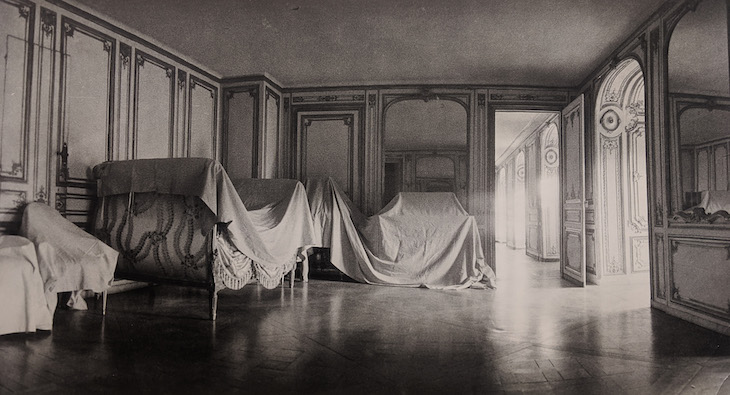
The Private Apartment of Madame du Barry at Versailles from Unseen Versailles (1980), Deborah Turbeville. Courtesy Staley-Wise Gallery; © Deborah Turbeville Foundation
When we did La Traviata at Glimmerglass in New York, he showed me two books: Unseen Versailles, a volume of melancholy, over-exposed photographs of empty rooms in Versailles by Deborah Turbeville, and a collection of beautifully observed cartoons by Paul Gavarni, drawn in Paris in 1848. Both were great inspiration. He collected a lot of books, knew a great deal about the history of art, and was an excellent guide in a museum: he knew what he wanted to show you, told you things you were fascinated to hear, and didn’t hang about. He was particularly excited by sculptures of people – he would comment on the gaze, the twisting of the head, the curve of the fingers – or would point to a decaying wall painting, made more interesting by the damage it had suffered. Walking through the streets he would often stop to photograph sharp triangles of shadow in a courtyard or alley, or carefully frame and capture a small part of a peeling poster. He made a book from some of these photographs called Nowhere in Particular (1999).
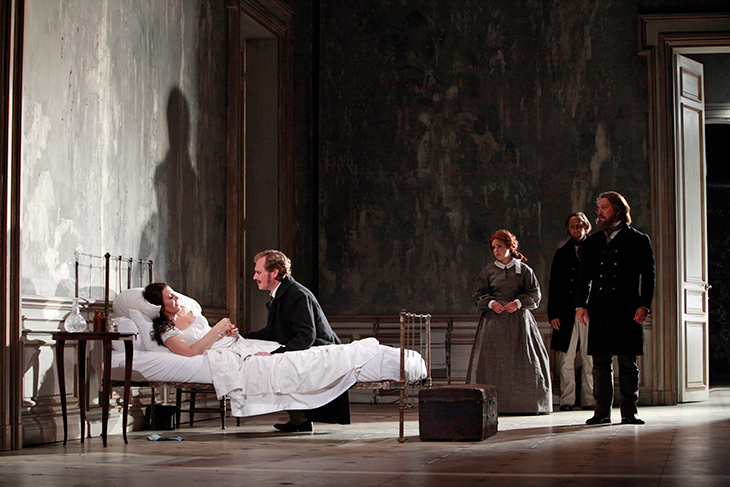
A scene from Jonathan Miller’s La Traviata at Glimmerglass Opera in New York, 2009, with set design by Isabella Bywater. Photo: Richard Termine
Long before I met him he was making abstract collage paintings of found paper or pieces of wood, which he continued until just a few months ago, and when we were working in Santa Fe he took to welding together old metal parts to make rather wonderful abstract sculptures. He was interested in all kinds of art, and took me to see all sorts of curiosities, from ‘Fridgehenge’ in New Mexico – a replica of Stonehenge made of refrigerators, embodying metal decay and graffitied lettering on an architectural scale – to the memorable Specola museum in Florence, with its astonishing display of sculpted body parts exposing disease and other medical curiosities. ‘Dazzling’ he would say. ‘Come and see this, isn’t it dazzling?’
Isabella Bywater is a director and designer for opera and theatre.
Unlimited access from just $16 every 3 months
Subscribe to get unlimited and exclusive access to the top art stories, interviews and exhibition reviews.

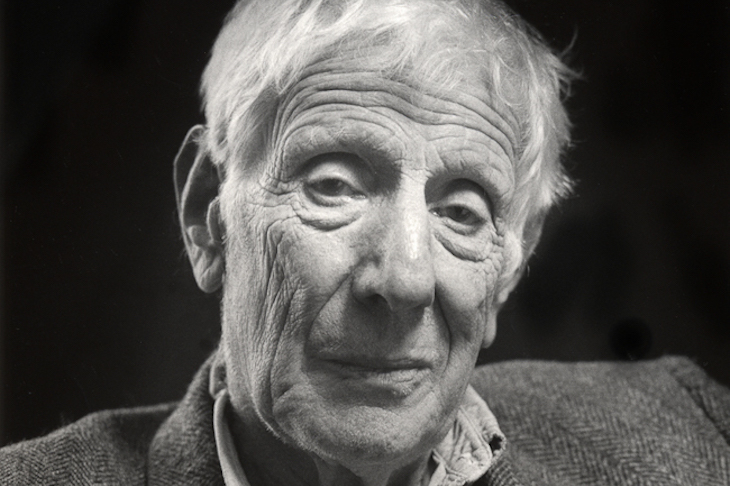
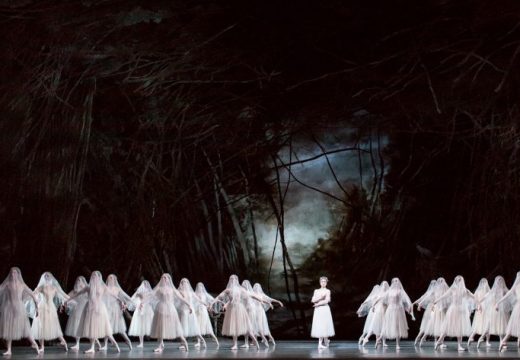











![Masterpiece [Re]discovery 2022. Photo: Ben Fisher Photography, courtesy of Masterpiece London](http://www.apollo-magazine.com/wp-content/uploads/2022/07/MPL2022_4263.jpg)
Has the Fitzwilliam lost the hang of things?